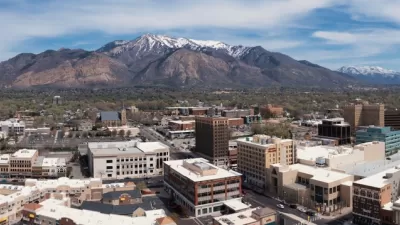Alan Durning details the negative effects that parking requirements have on housing affordability.

How do parking requirements raise rents? They do it in five ways, some of which affect all of the housing market and some of which only affect parts of it, according to columnist Alan During. Contributor Todd Littman summarizes the key impacts of parking requirements on rents:
1. More Costly Housing. Parking quotas drive up construction costs. High parking costs for construction effectively exclude new, less-expensive apartments from the market. There’s no way you can legally build your no-parking $800-a-month apartments, nor can anyone else, anywhere in town. The whole apartment market will be missing its bottom end.
2. Less Housing. Parking quotas constrain the supply of dwelling units, particularly of modest, economical ones, which causes their price to rise. You may end up building only 25 apartments, rather than 50. The same goes for every other builder in the city. Fewer new apartments mean more competition for all apartments. Rents go up.
3. Building Conversions Blocked. Parking quotas often make it prohibitively expensive to adapt buildings for other uses. Developers cannot convert vacant warehouses into lofts, or aging office blocks into condos, unless they somehow shoehorn floors of parking into the historic structures. This effect may keep fewer apartments off the market than does effect 2 (above), but in older cities, it can still keep thousands of apartments from getting built.
4. Dispersed Housing. By suppressing the number of apartments on each city lot (see 2 and 3), quotas force housing demand to spread outward across the landscape. In a word: sprawl, which raises travel distances and commuting expenses. Instead of 50 apartments on your in-city lot and many others like it, there may be only 25. Apartment hunters will have to go farther afield, increasing their cost of living, if not their rent.
5. Billing Non-parkers. Parking quotas shift the cost of storing vehicles from those vehicles’ owners into the rent of non-owners. By flooding the market for parking, quotas make it impossible to recoup the full cost of parking by charging its users. You can’t charge $250 a slot, because the neighborhood is awash in mandatory parking stalls. Fortunately for you, the same parking quotas that have flooded the parking market are starving the apartment market, making it possible to charge higher rents. This effect does not raise the rent on average beyond what effects 1, 2, and 3 do, but it does shift the cost of storing vehicles from car owners to non-owners. Even tenants who do not use parking pay for it.
These five effects interact and reinforce one another. They knock the bottom off of the apartment market, pushing working-class people to double up or commute longer distances. They raise the rent for everyone, driving up the cost of living while lowering the price of parking. And they shift parking costs to those who don’t use it.
Author Alan Durning reports that the case study in based on scenario analysis by the Portland Bureau of Planning and Sustainability that uses real-estate planning tools, and illustrates the way parking requirements raise the price of housing.
FULL STORY: Apartment Blockers" Parking rules raise your rent.

Planetizen Federal Action Tracker
A weekly monitor of how Trump’s orders and actions are impacting planners and planning in America.

Map: Where Senate Republicans Want to Sell Your Public Lands
For public land advocates, the Senate Republicans’ proposal to sell millions of acres of public land in the West is “the biggest fight of their careers.”

Restaurant Patios Were a Pandemic Win — Why Were They so Hard to Keep?
Social distancing requirements and changes in travel patterns prompted cities to pilot new uses for street and sidewalk space. Then it got complicated.

DC Area County Eliminates Bus Fares
Montgomery County joins a growing trend of making transit free.

Platform Pilsner: Vancouver Transit Agency Releases... a Beer?
TransLink will receive a portion of every sale of the four-pack.

Toronto Weighs Cheaper Transit, Parking Hikes for Major Events
Special event rates would take effect during large festivals, sports games and concerts to ‘discourage driving, manage congestion and free up space for transit.”
Urban Design for Planners 1: Software Tools
This six-course series explores essential urban design concepts using open source software and equips planners with the tools they need to participate fully in the urban design process.
Planning for Universal Design
Learn the tools for implementing Universal Design in planning regulations.
Heyer Gruel & Associates PA
JM Goldson LLC
Custer County Colorado
City of Camden Redevelopment Agency
City of Astoria
Transportation Research & Education Center (TREC) at Portland State University
Camden Redevelopment Agency
City of Claremont
Municipality of Princeton (NJ)





























